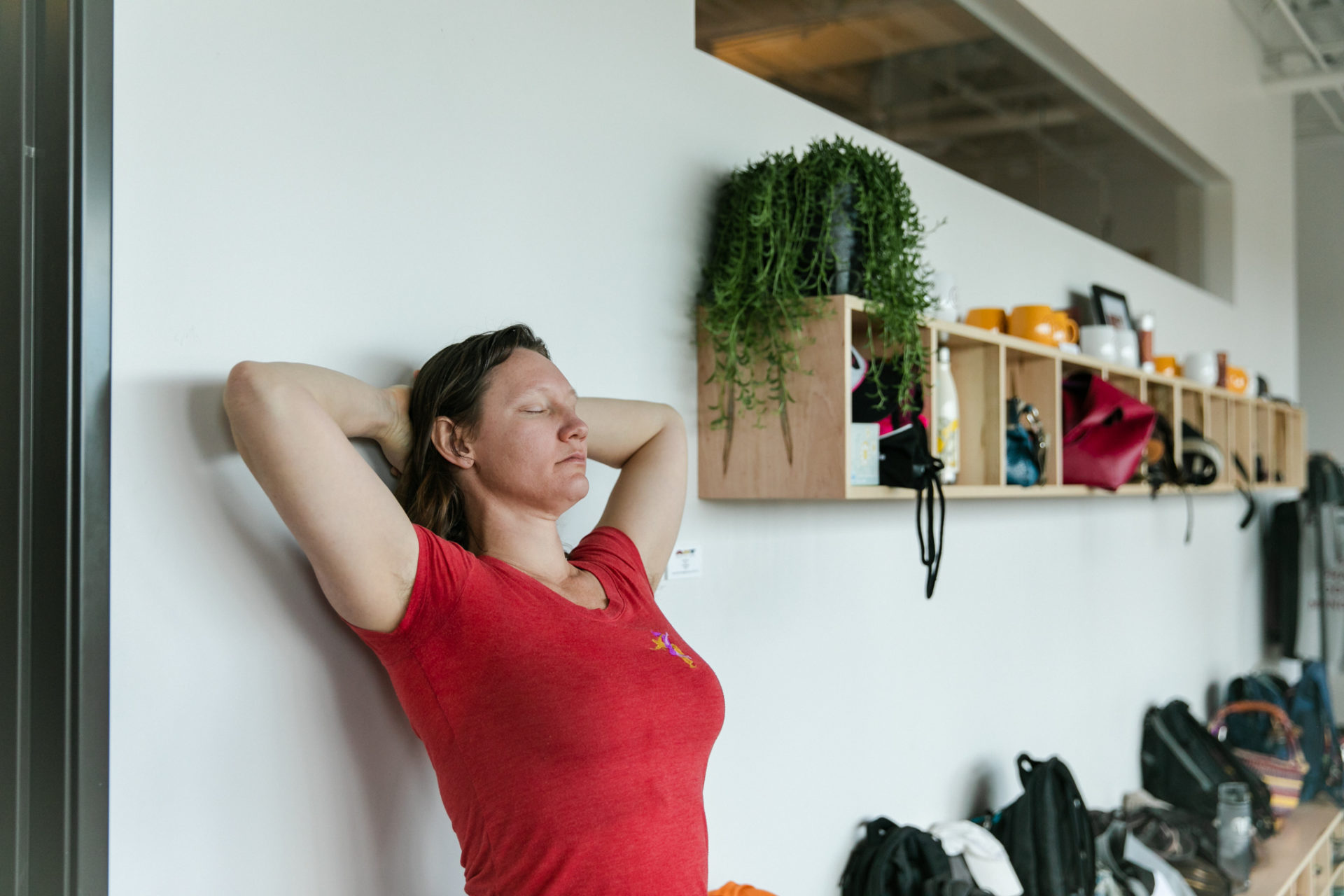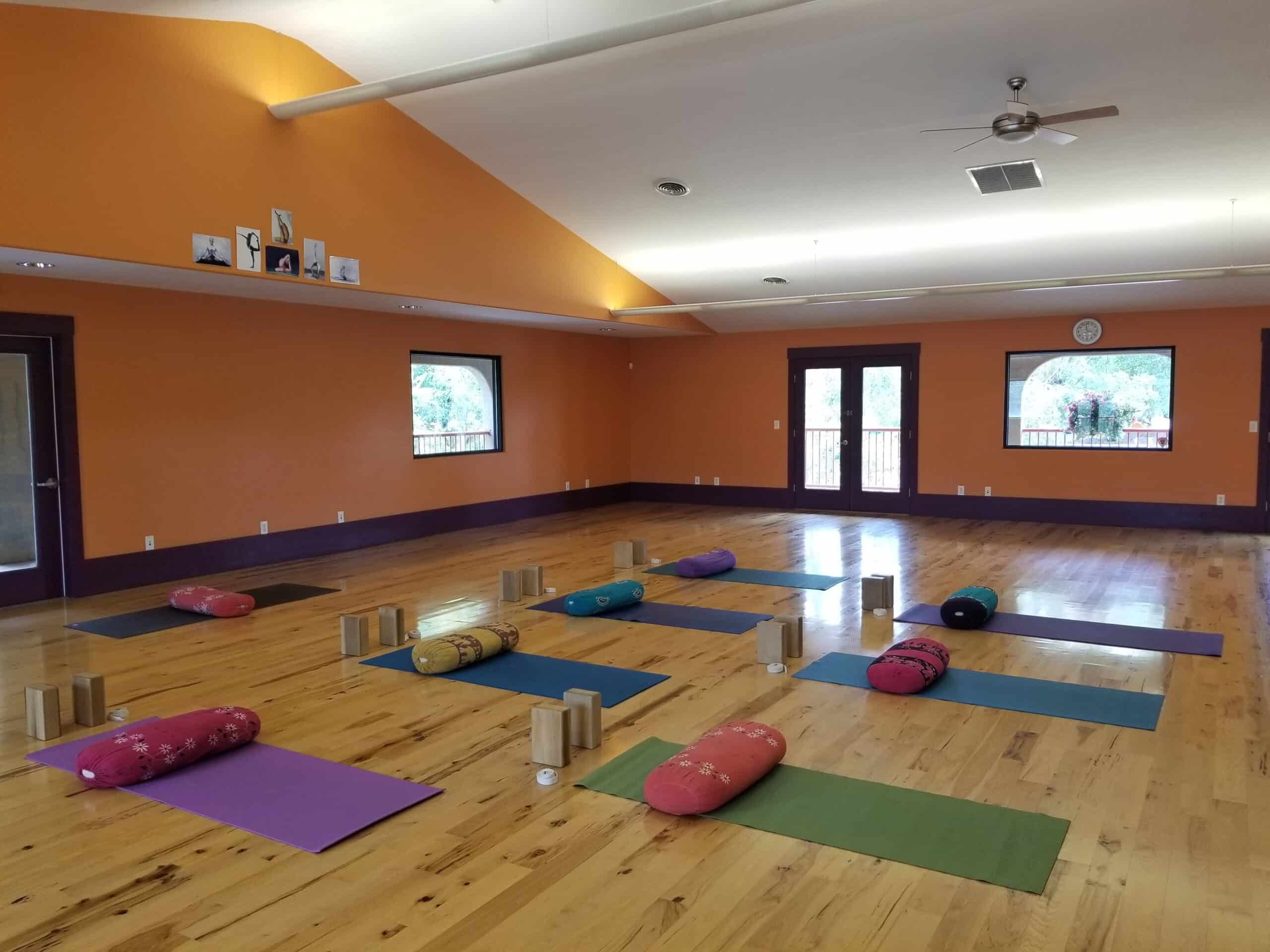How Yoga Can Help The Top 5 Health Hazards Associated With Sitting | By Darvin Ayre, Craig Heneveld and Kristin Savory
Has sitting gotten you feeling down?
These days, most of us are sitting more than ever. While sitting is nearly a non-negotiable for modern life, the human body was designed to move.
Between driving, dining, watching TV and working, Americans are logging more and more hours sitting. Surveys confirm that the average American adult now logs six and a half hours each day sitting. For teens (ages 12-19), sitting has climbed to eight hours each day.
Studies have shown that sitting can have detrimental effects on our health and well-being.
An article from the Mayo Clinic has condensed what many researchers have defined as the negative effects of sitting. Here’s five health risks associated with sitting for prolonged periods of time:
- Weight gain: we burn less calories when sitting, thereby increasing the likelihood of weight gain.
- Metabolic syndrome: with prolonged sitting, our metabolism may be affected and our bodies may have more challenges breaking down fats and sugars.
- Heart diseases (including coronary artery disease and high blood pressure): the cardiovascular system may be affected due to lack of movement.
- Osteoporosis and falls: bones may become more brittle due to sittings’ effect on mineral metabolism.
- Increased feelings of anxiety and depression: more research needs to be done to understand the link between sitting and anxiety/depression, however researchers are noticing a correlation between sitting and emotional health.
Some studies suggest that having a sedentary lifestyle might be linked to premature death.
There is good news though. Even though our modern lifestyle has us sitting more than ever, a new study from Norway confirms that exercising for an hour a day may be enough to counteract the harmful effects of a sedentary lifestyle.
Here’s three concepts that you can integrate into your yoga practice to mitigate the negative effects of sitting:
- Sustained poses: by holding poses and varying timing, you have the ability to impact the circulatory system. As you access the circulatory system, you have the opportunity to increase the blood flow to different areas of your body.
- Compression and expansion techniques: the body responds to localized pressure/ compression techniques. By combining compression with expansion poses, you’re able to influence a circulatory and lymphatic pump for your system that minimizes the effects of sitting and improves the overall health and vitality of your being.
- Focus on variety: one of the main reasons why sitting is detrimental is that lack of movement decreases blood flow. Blood needs to flow throughout your body to bring nutrition, oxygen and chemical messengers throughout the bodies’ tissues and glands. By introducing variety, you are increasing the circulatory flow throughout your system.
Yoga has always been a tool designed for us to work with the challenges of our day. Today’s yoga must address the issues faced by the modern body and the modern mind. Perhaps the greatest challenge of modern life is the number of hours that we spend sitting. By incorporating the three concepts above into your practice, you can become even more efficient and effective in your practice.
To learn more, check out this TEDtalk video by Murat Dalkilink.
Photo by Mary Pantier.
 Kaiut Yoga is a biomechanical form of yoga designed to be accessible to everyone. With pain affecting more Americans than diabetes, heart disease and cancer combined, Kaiut Yoga is a method of yoga that may help decrease pain and increase mobility for all. Craig, Darvin and Kristin are proud owners/teachers of Kaiut Yoga Boulder. To see their full teaching schedule go to kaiutyogaboulder.com/class-schedule/
Kaiut Yoga is a biomechanical form of yoga designed to be accessible to everyone. With pain affecting more Americans than diabetes, heart disease and cancer combined, Kaiut Yoga is a method of yoga that may help decrease pain and increase mobility for all. Craig, Darvin and Kristin are proud owners/teachers of Kaiut Yoga Boulder. To see their full teaching schedule go to kaiutyogaboulder.com/class-schedule/The FreeSip from Owala keeps your water cold for up to 24 hours, allows you to drink two [...]

Subscribe to Our Tribe
Stay up to date with Y+L News, Events and special announcements.










